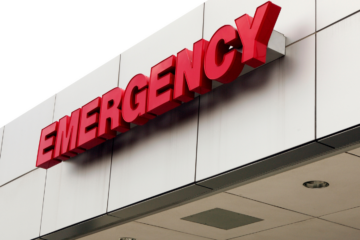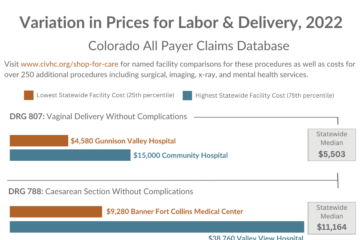For Breast Cancer Awareness Month, we are using the Center for Improving Value in Health Care’s (CIVHC) Community Dashboard, powered by data from the Colorado All Payer Claims Database (CO APCD), to look at breast cancer screening rates in Colorado.
Breast cancer is one of the most common types of cancer in the United States, with over 310,000 new cases expected this year. However, the death rate of people with breast cancer continues to go down as screenings rise and improved treatment options lead to earlier diagnoses and interventions. According to data from the National Cancer Institute, Colorado follows the same trends as the nation. Breast cancer diagnoses across the state increased from 125 per 100,000 residents in 2010 to 137 in 2021. Meanwhile, the mortality rate dropped from 20 to 19.2 per 100,000 residents over the same time period.
Breast Cancer Screening Trends in Colorado
Breast cancer screening rates are featured in the Community Dashboard and are based on Healthcare Effectiveness Data and Information Set (HEDIS) measures endorsed by the National Quality Forum. The HEDIS breast cancer measure assesses the percent of women ages 50-74 who have had at least one mammogram within the past two years.
Across all payers, breast cancer screenings in Colorado have remained consistent the last few years, climbing back after a slight dip in 2020-2021 likely tied to the COVID-19 pandemic. Overall, breast cancer screenings increased by 8.5% from 2014-2022.
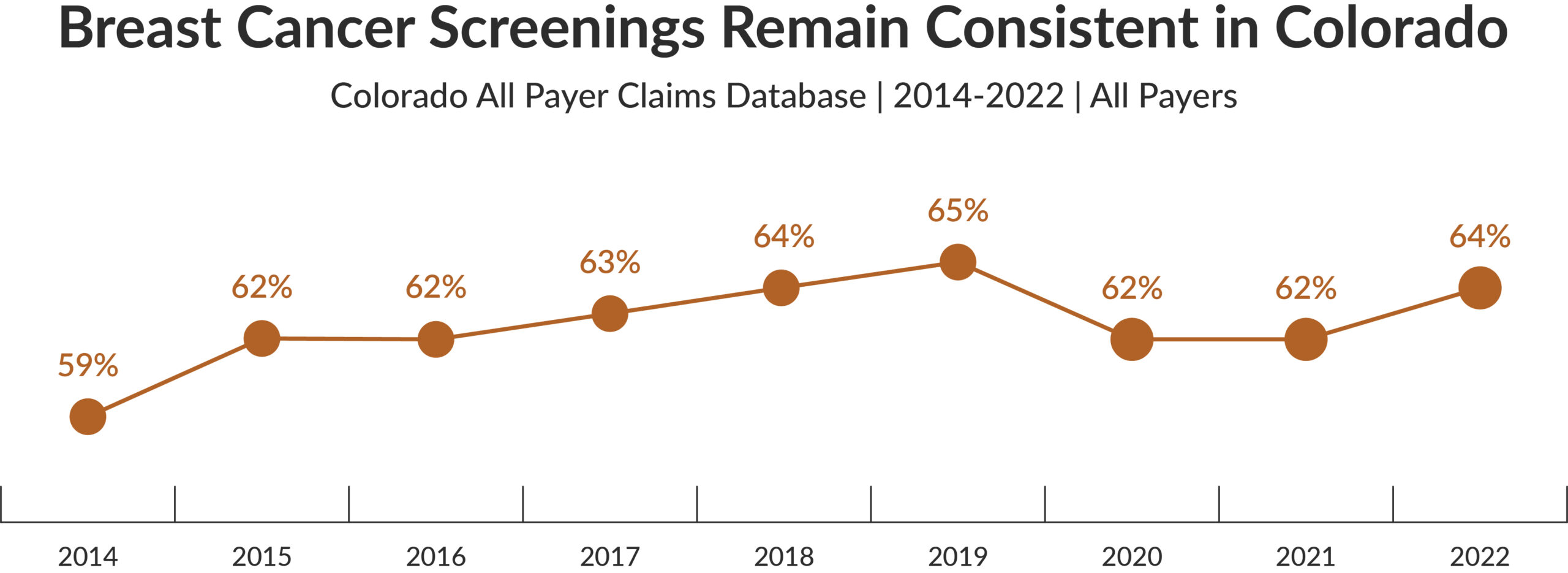
Along with improved overall statewide rates, breast cancer screening rates have steadily improved among Colorado’s rural communities, growing from 56% to 59% from 2014 to 2022. However, when looking deeper at the data, disparities do appear between people living in urban and rural areas and by different health insurance types in those regions.

Before looking further at the divide in breast cancer screenings between Coloradans in rural and urban areas, it is important to highlight a specific subgroup that experiences drastically lower screening rates across the state. Among people covered by Medicaid, while there is less disparity in screening rates between urban and rural residents, overall screening rates are substantially lower than the statewide average and people covered by other insurance payers with fewer than 50% of people receiving screenings.
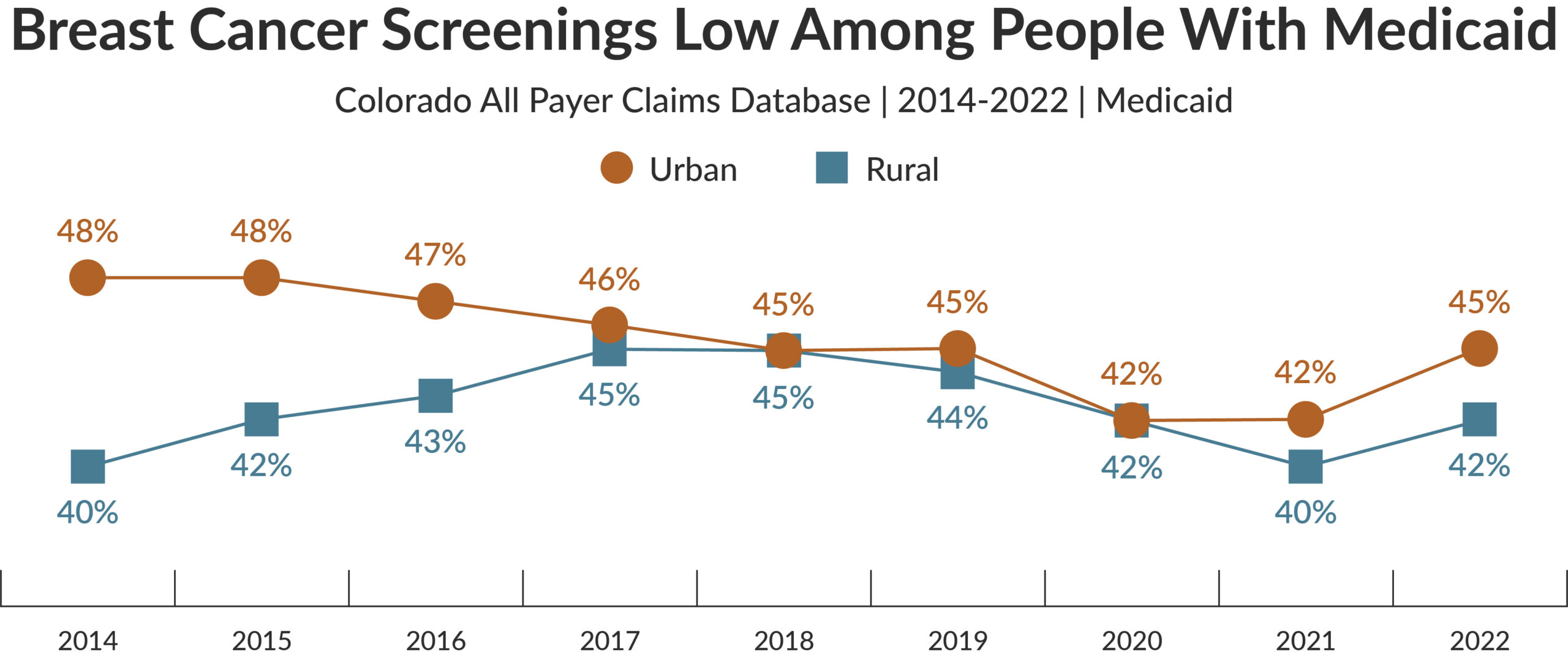
Despite consistent overall improvement, screenings remain notably lower among people living in rural verses urban areas. One potential driving factor is limited access to providers and imaging facilities in rural areas.
The county map below shows that several rural counties in Colorado have very low rates of breast cancer screening – with many having fewer than 50% of women in the county receiving screenings as recommended. The counties with the highest rates of breast cancer screening tend to fall in the urban I-25 corridor and western slope areas, although there are some rural counties with higher screening rates such as Pitkin and Eagle which tend to be more affluent.
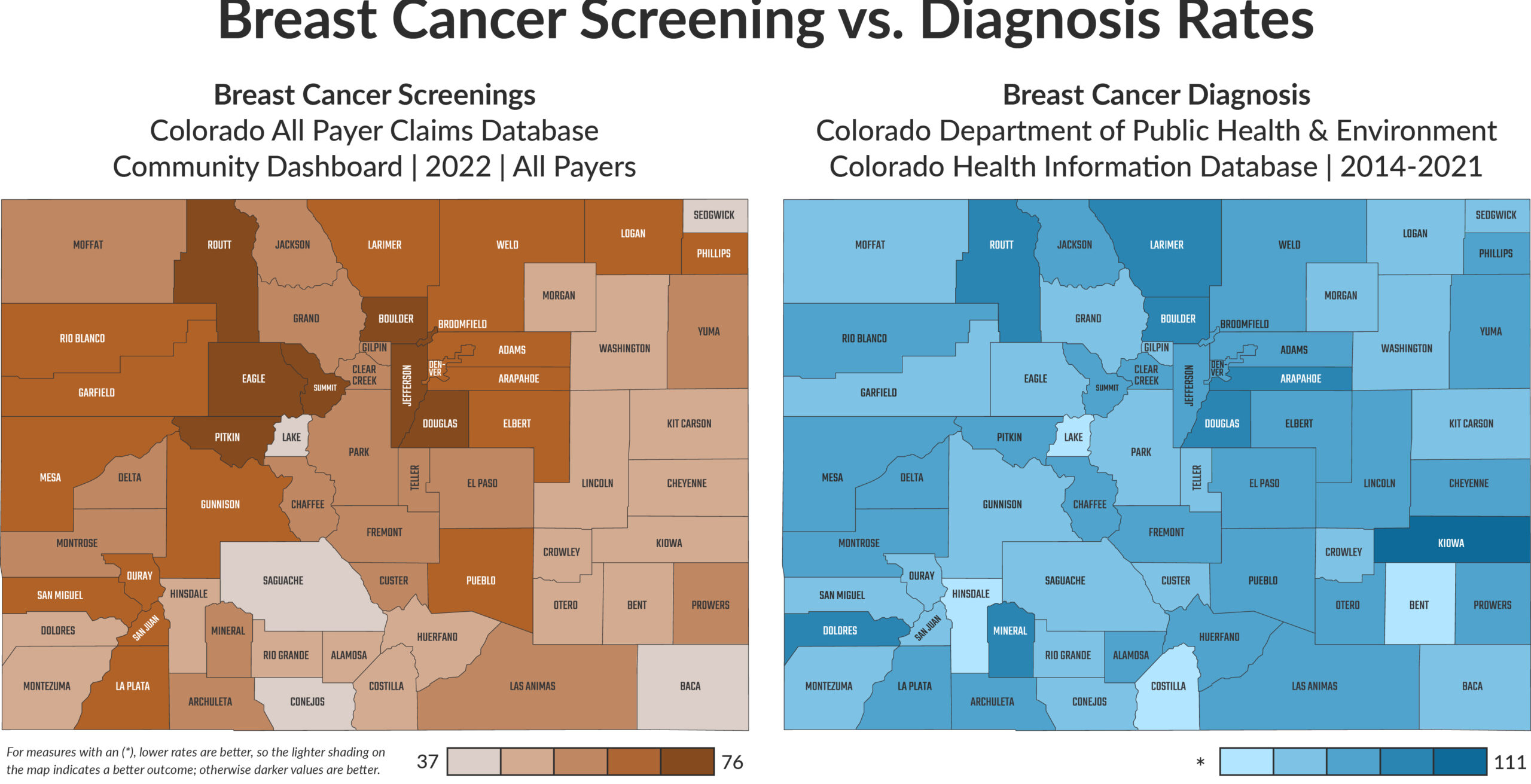
Breast Cancer Screenings by Health Insurance Type in Rural Communities
People covered by commercial health insurance remain the group most consistently receiving required screenings, with rates in the mid-60s to low 70s. While there remains a gap between urban and rural screening rates with the commercially insured population, it is smaller than among other insured groups with a gap of 6% in 2022.
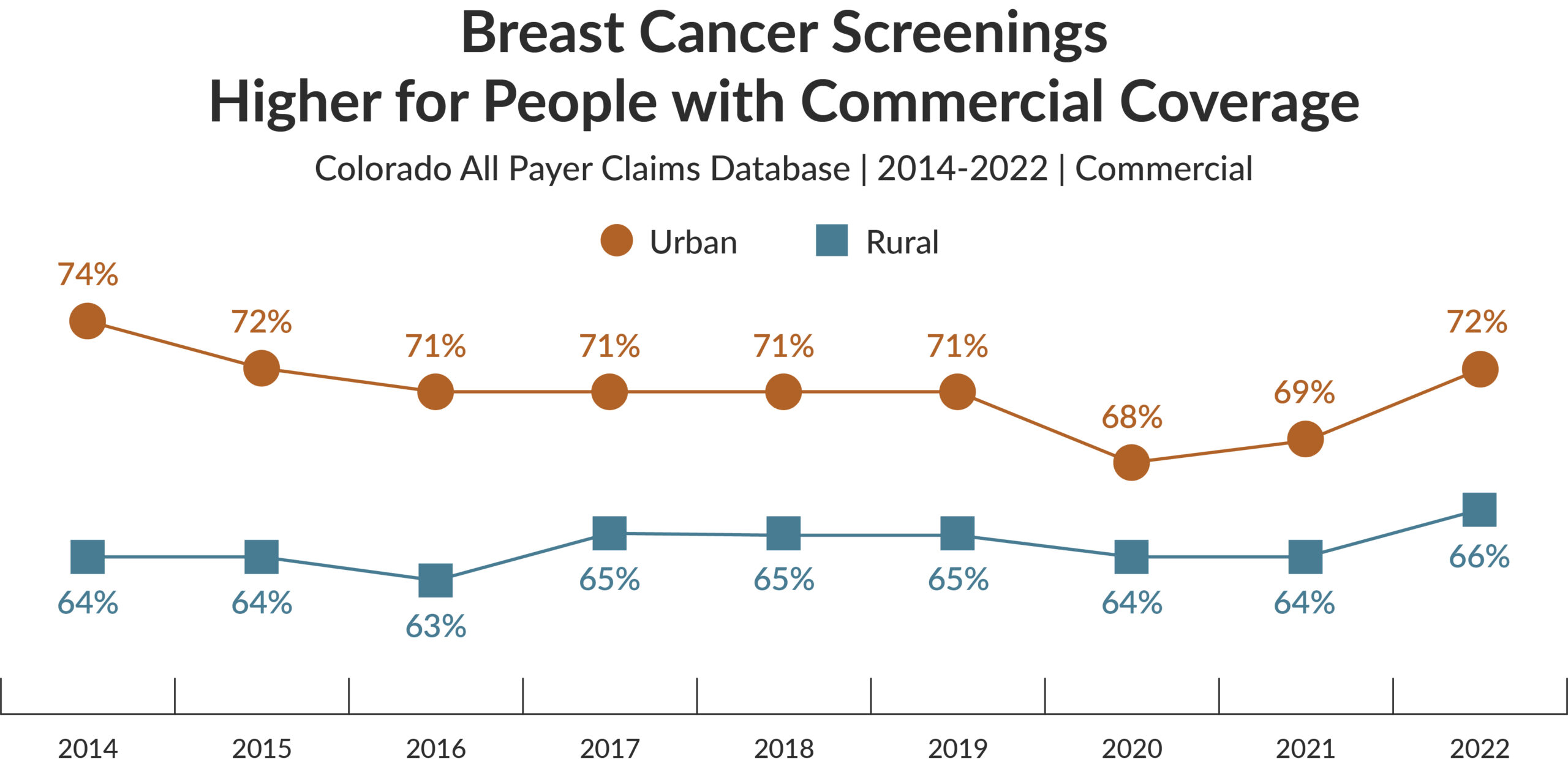
Conversely, Medicare Advantage members exhibit the most pronounced difference in breast cancer screenings based on geographic location. In 2014, rates for rural and urban were virtually the same at roughly 50%, but in 2022, 72% of urban residents with Medicare Advantage received a screening compared to only 65% of those living in a rural area.
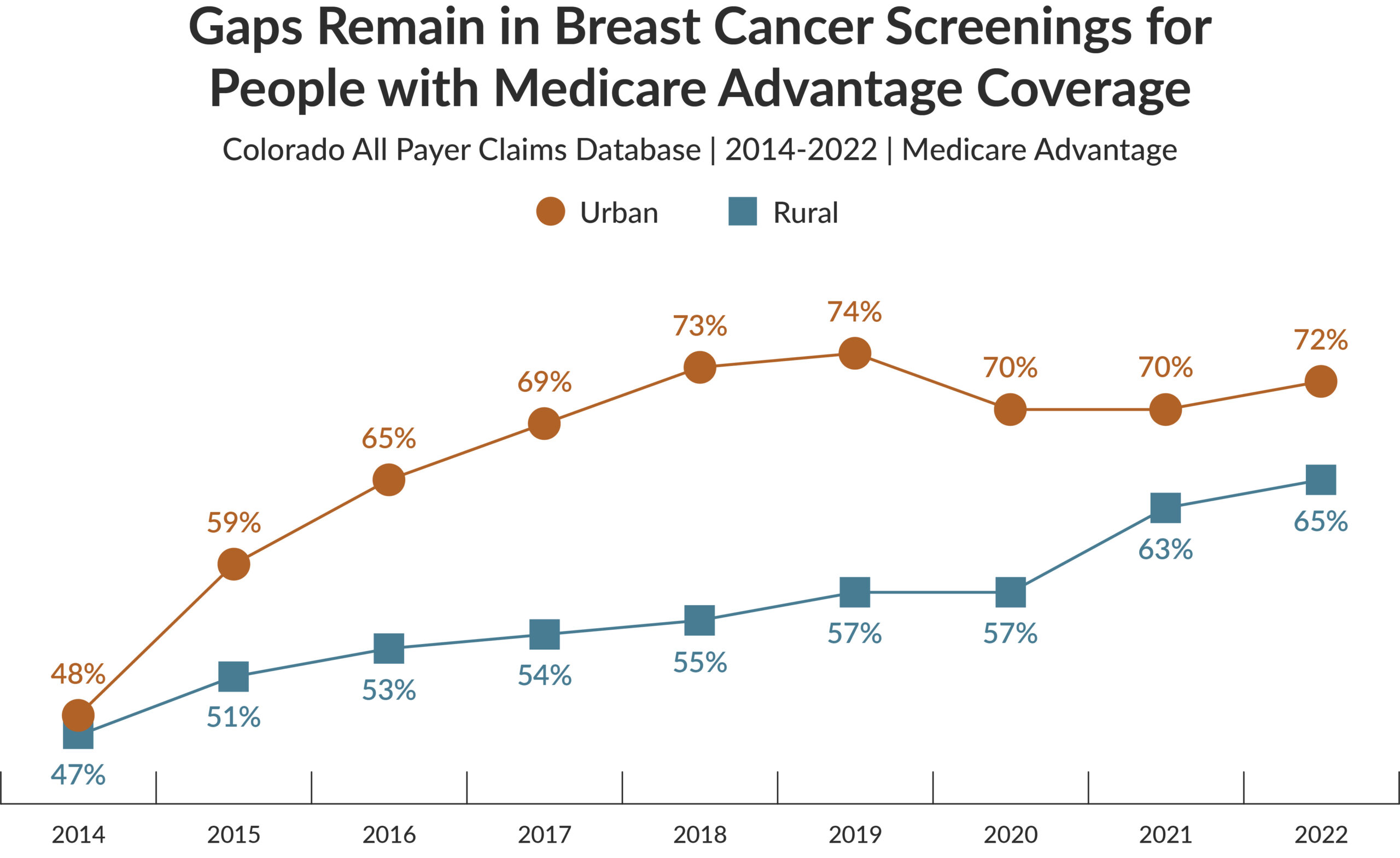
Meanwhile, members covered through Medicare FFS experience similar screening rates across urban and rural populations. Screening rates are in the mid-50s to low 60s across Medicare FFS members, with a gap between urban and rural rates of just three percentage points in the most recently measured year of 2022.
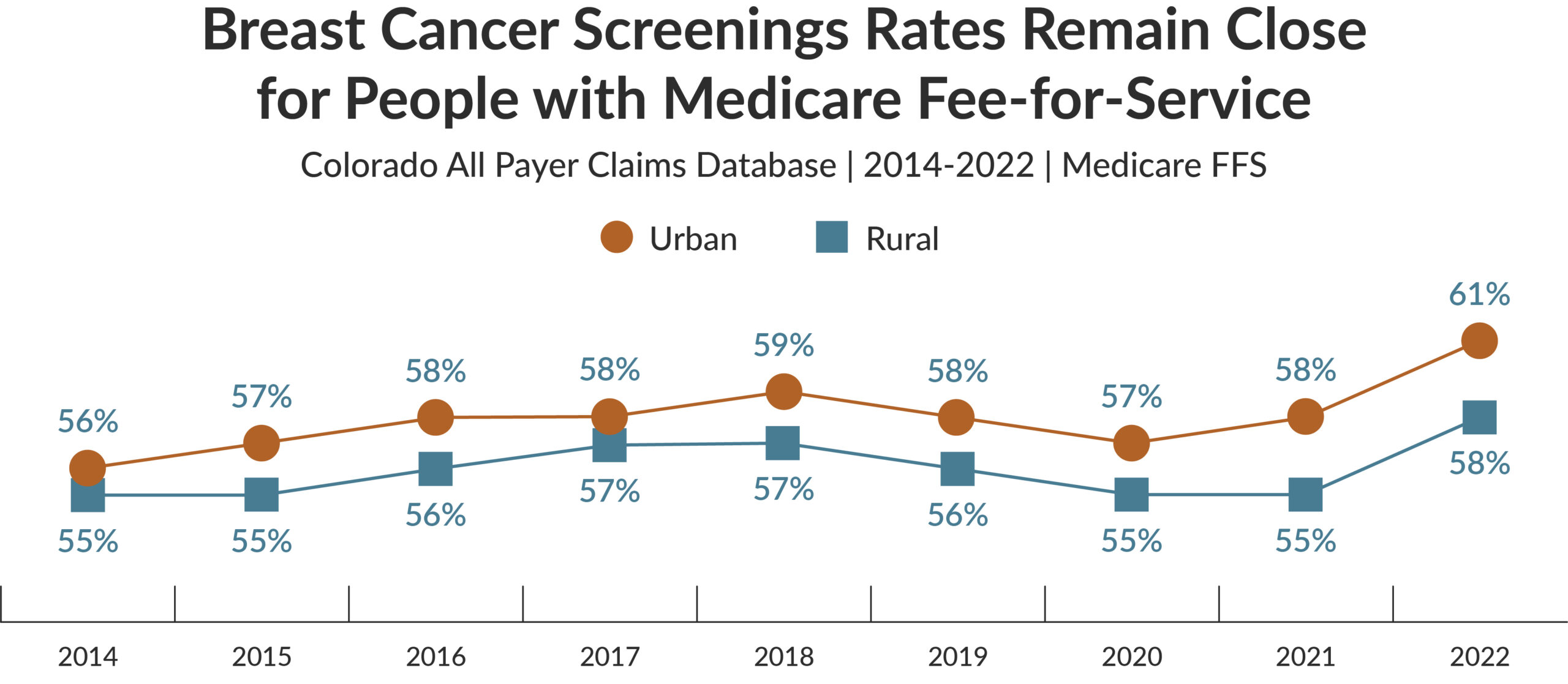
In general, breast cancer screenings continue to improve across our state, however, the data shows that health equity gaps remain and opportunities to improve exist. CO APCD data, like that available on the Community Dashboard, can help Change Agents in Colorado improve breast cancer screening rates in many ways, including:
- Knowledge about regional variation in screening utilization can inform where to launch education and outreach initiatives.
- Demographic and information surrounding breast cancer screening based on payer type could provide insight into different barriers to access.
CIVHC will continue to track the state’s progress in breast cancer screenings and other cost and utilization measures.
Have questions about the data? Contact us at info@civhc.org or visit our website for more information.
